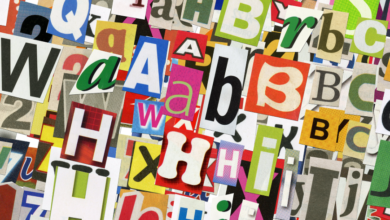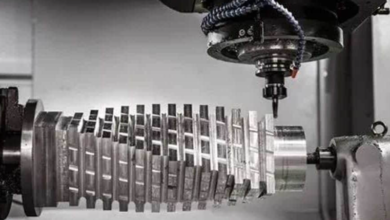5 Ways an AI Email Assistant Can Improve Your Workday Efficiency

Managing email often feels like a full-time job. Between unread messages piling up, constant notifications pulling you out of focus, and the never-ending cycle of sorting, replying, and following up, it’s easy to feel like your inbox is running your day.
The good news? It doesn’t have to be that way. AI-powered tools are now smart enough to take over the repetitive parts of email management so you can focus on actual work. An email productivity assistant can organize messages, draft responses, flag tasks, and even summarize your inbox before you’ve had your morning coffee.
In this article, we’ll look at five ways an AI email assistant can help you reclaim hours of your day and finally get your inbox under control.
5 Ways an AI Email Assistant Makes Work Easier
If you’re wondering how exactly an AI email assistant can make a difference, here are five ways it can help you stay organized, save time, and improve your focus throughout the day:
1. Prioritize What Really Matters
One of the biggest productivity killers is spending too much time on low-priority messages. Think newsletters, promotional emails, and endless reply-all threads.
An AI email assistant can analyze your inbox patterns—who you respond to most often, the topics you engage with, and even the timing of your responses—and automatically sort messages into categories like urgent, important, and informational.
This means you open your inbox and instantly see what deserves your attention first. No more scanning through 100 subject lines just to find the two that actually matter.
Example:
- Emails from your manager or top clients appear at the top of your inbox.
- Newsletters or internal updates that can wait are moved to a “read later” folder.
- Meeting confirmations or calendar invites are flagged so you don’t miss them.
By letting AI handle the triage, you spend less time playing gatekeeper and more time acting on what matters most.
2. Draft Replies in Seconds
How often do you stare at a blank screen trying to figure out the right way to respond? Or rewrite the same information over and over for different recipients?
An AI email assistant can dramatically reduce this wasted time. It can generate draft responses based on the context of the message, your previous emails, and even your preferred tone of voice. All you need to do is review the draft, make minor edits if necessary, and hit send.
Imagine receiving a meeting request and having a full, polite confirmation draft ready before you’ve even clicked “Reply.” Or responding to a customer query with a pre-drafted email that uses the same professional language you would.
The result? Minutes saved on every email add up to hours each week. And because you’re spending less time fussing over wording, you can redirect that energy into tasks that actually move your work forward.
3. Extract Action Items Automatically
Your inbox isn’t just for communication; it’s full of tasks. A colleague asks you to review a document. A client wants feedback by Friday. Your manager sends a list of deliverables. The challenge is keeping track of it all without missing deadlines.
This is another area where an email productivity assistant shines. Using natural language processing, it can scan incoming messages for tasks and deadlines, then turn them into to-do items automatically.
How it works:
- It recognizes phrases like “Can you send this by Tuesday?” or “Please confirm by the end of the day.”
- Tasks are added to your calendar or project management tool with the correct due dates.
- You get reminders before the deadline, so nothing slips through the cracks.
Instead of re-reading emails to build your own task list, the AI assistant keeps you organized in the background. That mental clarity alone can make your workday feel lighter.
4. Deliver Daily Summaries
A common complaint about email is how scattered it makes you feel. You start your day diving into a pile of messages and end up reacting to everything instead of working on your priorities.
An AI email assistant can flip that script by sending you a daily summary each morning. This briefing highlights:
- Top-priority emails you need to act on
- Any pending tasks pulled from your inbox
- Upcoming meetings or calendar conflicts
- Low-priority emails you can ignore or address later
With one glance, you know exactly what your day looks like. You can plan your schedule around high-value work instead of letting your inbox dictate your priorities.
For busy executives and team leads, this kind of clarity is a game-changer. It helps you delegate effectively and set realistic expectations for the day.
5. Reduce Context Switching
Context switching, the mental cost of jumping between tasks, is one of the biggest drains on productivity. Email makes it worse because it’s always open and always tempting.
Here’s where AI comes in. A well-designed email productivity assistant minimizes how often you need to open your inbox in the first place.
How?
- It alerts you only when truly urgent messages arrive.
- It batches lower-priority emails into digest form, so you deal with them in one go.
- It handles routine scheduling and follow-ups automatically, freeing you from the back-and-forth.
Instead of constantly toggling between deep work and email, you can set aside specific times to review your inbox, knowing the assistant has already filtered and organized it for you.
The mental space you gain from fewer interruptions can significantly improve focus and the quality of your output.
Why You Shouldn’t Wait to Try One
Email overload isn’t just frustrating; it’s a major drain on your productivity and even your job satisfaction. Studies show that the average professional spends nearly 28% of their workweek managing email. That’s more than an entire workday lost every single week.
An AI email assistant can help you reclaim that time. Unlike traditional email filters or canned responses, these tools are context-aware. They learn your preferences, adapt to your workflow, and get smarter the more you use them.
The best part? They work right inside the inbox you already use, whether it’s Gmail, Outlook, or another email client. There’s no need to learn a new platform or overhaul your entire process. Setup is usually as simple as connecting your account and letting the AI handle the rest.
What to Look For in an AI Email Assistant
If you’re considering adding one to your toolkit, here are a few features worth prioritizing:
- Privacy-first architecture: Make sure the assistant doesn’t store your emails on external servers or use them to train models.
- Contextual intelligence: It should understand who the message is from, what’s being asked, and how urgent it is.
- Seamless integration: Choose a tool that works within your existing email client rather than forcing you into a separate app.
- Task and calendar support: Bonus points if it automatically extracts action items and syncs them with your calendar or to-do list.
- Customizable tone: You’ll want replies to sound like you, not a generic bot.
Final Thoughts
An AI-powered email productivity assistant isn’t about outsourcing your entire inbox to a robot. It’s about removing the friction that slows you down every time you open your email.
By prioritizing messages, drafting responses, surfacing tasks, and giving you a clear daily overview, these assistants free you to focus on the work that actually matters.
If you’ve ever wished you could start each day with a clean, organized inbox and a clear plan, now you can. Try Newmail, an AI email assistant, and see how much lighter and more productive your workday feels.



